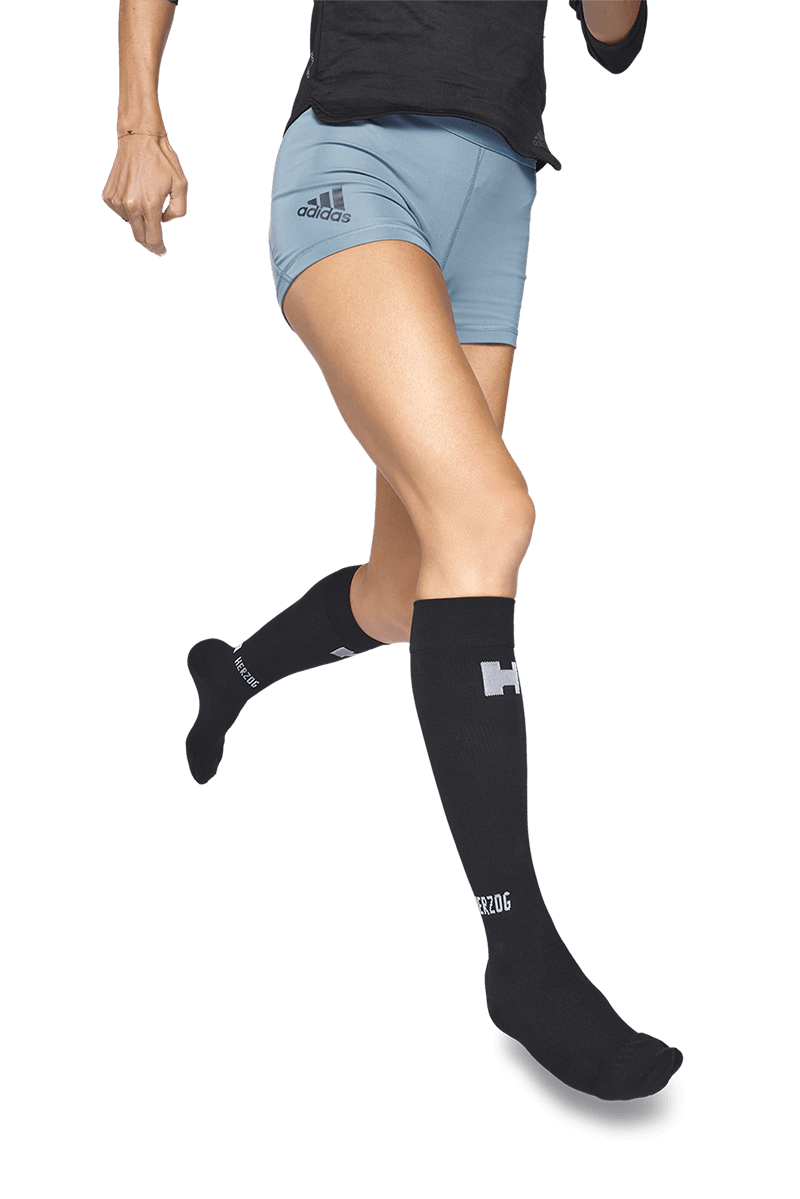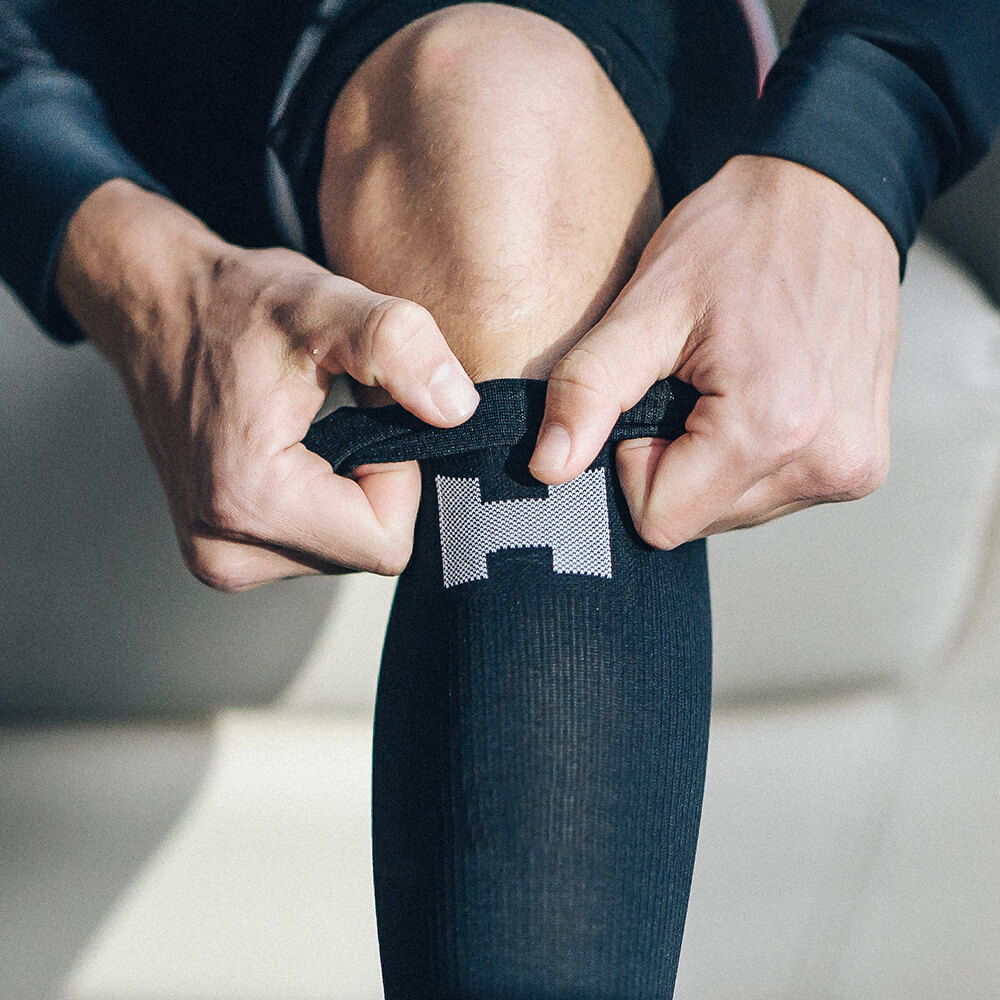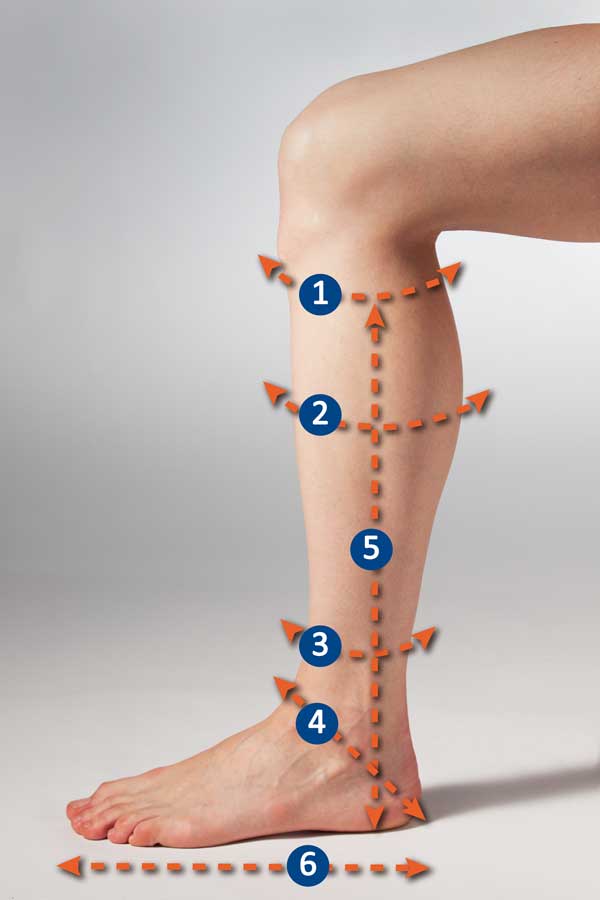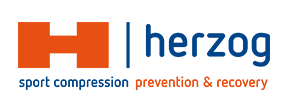Function Herzog Compression
PREVENT
PERFORM
RECOVER
LIKE A PRO

Injury prevention
During the foot landing in the walking movement, the socks ensure that there is much less lateral vibration and therefore less shaking load of the relatively heavy calf muscles. This creates less tensile forces on the tibia and Achilles tendons.
Pending use
After strain (muscle tear) or cramping (microcrack) in the calf, the wound edges are tightly pressed and held together by the compressing sock, thus speeding up the healing process and reducing the risk of scarring. Scar tissue is still somewhat stretchy at best but will never regain the elasticity of the surrounding muscle. In addition, bruising is effectively prevented. The socks act as a suture patch which will cause the injury to heal more quickly.
Shock absorbing
The calf remains compact and solid due to the compressing sock, effectively reducing the shock during the foot landing. This shock-absorbing effect will reduce muscle damage. Less muscle damage also means that less fluid is retained in the space between the cells.
Recovery and performance-enhancing
With intensive exertion and large shock load, muscle cell tissue will be broken down. Muscle cell residues bind water in the space between the cells, causing adverse effects on microcirculation. The supply of nutrients and oxygen to the muscle cell is impeded and the discharge of lactic acid (waste product of the incineration process) and carbon dioxide stagnates.
The socks offer relatively high compression at ankle level with a decreasing course towards the knee. Due to the increased pressure on the muscle tissue, the excess moisture, with dissolved waste from the combustion process, is forced back into the circulation from the inter-cell space. The so essential decreasing pressure of the sock ensures that the blood in the veins, against gravity, is traced back towards the heart.
It is recommended to wear the socks for quite some time after exercise, in order to take full advantage of the restorative properties of the sock.


”The Herzog sports compression socks effectively contribute to the prevention of lower leg complaints, I get as feedback from many top athletes.”
Prof. Dr. F.J.G. Backx. Sports doctor
Way of functioning
floor for professionals

Rehabilitation and performance enhancement
With large shock loads and prolonged exertion, muscle cell tissue (muscle protein) will be broken down. Muscle cell residues remain in the gap. A lot of protein in the middle cell space has a negative impact on the so-called Colloid Osmotic Pressure (COD), which makes tissue fluid more difficult to absorb (resorbed) in the vein (venous) part of the capillaries network. As a result, moisture is retained, as it were bound in the insterstitium. Edema formation negatively affects blood circulation, which impedes the supply of nutrients and oxygen and stagnates the discharge of lactic acid (waste product of the incineration process) and carbon dioxide. The Herzog PRO Compression Socks offer a relatively high single-level compression of +/- 30mmHg, decreasing towards knee, +/- 23mm Hg. The effect of the socks in combination with the so-called calf muscle pump ensures, in particular, faster discharge of blood through the veins (fens). Due to the increased tissue pressure, the excess moisture, with dissolved waste slag from the combustion process dissolved therein, is forced back into the circulation from the intermediate cell space. The so essential decreasing pressure of the sock ensures that the vein blood, against gravity, is fed back to the heart adequately.
Measures | Compression tailored to your legs
As previously indicated, it is important that a decreasing pressure gradient from the ankle to the knee is incorporated into the compression sock. However, the combination of relatively high compression with this decreasing pressure gradient requires the precise measurement of the leg and foot. The shoe size alone does not give information about the shape of the leg. With the same shoe size there can be very different leg contours and there will be an important difference in effect of the pressure on the leg. In the case of a sock that is not properly measured, there may even be a counterproductive effect. Consider, for example, the difference in calf size between a sprinter and an endurance athlete when both may have the same shoe size. This is excluded when the legs are measured exactly.

Colloid Osmotic pressure
The residual pressure of the heart ensures that fluid with nutrients and oxygen is pressed from the capillaries to the space between the muscle cells (filtration). The colloidosmotic counterpressure exerts a suction effect from the space between the muscle cells to the capillaries (resport), which attracts moisture with waste products from the combustion of the tissues. Colloid Osmotic pressure is the pressure difference that occurs between two protein solutions (inside and outside the blood vessel) of different concentrations due to osmosis. The vascular wall is permeable for water but not for large molecules such as proteins. In muscle cell breakdown, the protein concentration outside the blood vessel will increase, so no longer be in balance with the filtration force, which will reduce the inward-facing ‘suction’. The result of this is the emergence of edema.
Calf muscle pump
The blood vessels can only continue to work properly if they are regularly rhythmically emptied by the muscles in the legs – such as when walking. This is what we call the operation of the calf muscle pump. Thus, the blood will be efficiently drained in the direction of the heart. If movement remains off and the veins get little or no help from the regularly astringent leg muscles, they will have a hard time. The waste products that are in the venous blood are then insufficiently removed.
